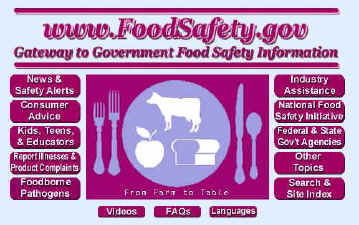press releases
PROTESTERS DEMAND EPA NOT ALLOW
STARLINK ANIMAL FEED CORN IN HUMAN FOOD EPA to say if StarLink will be
approved after massive contamination of U.S. food supply.
ARLINGTON, Va., - In the face of
strident protests, the Environmental Protection Agency today met with
scientists to help determine if a variety of animal feed corn should
be approved for human food. Activists from Greenpeace, wearing
chicken, cow and sheep masks, gathered outside the meeting around a
feeding trough full of corn and displayed a banner reading, "EPA:
Don't Test Gene-Altered Corn on Us." The genetically engineered
corn, called StarLink, has been allowed to illegally contaminate the
U.S. food supply, leading to the recall of hundreds of popular foods.
"EPA's process is fatally
flawed," said Charles Margulis, Greenpeace genetic engineering
specialist. "Instead of punishing Aventis for illegally
contaminating our food, the agency is on the verge of orchestrating a
corporate bail-out. Industry will never again take any EPA regulation
seriously if the agency lets Aventis off the hook now." EPA
originally allowed Aventis, the biotech firm that developed StarLink,
to sell the seed on the promise that the company would insure that
none of the harvested corn would be used for human food. Despite
scientific concerns about the safety of StarLink, EPA is considering
Aventis' request to retroactively approve the corn in food.
"EPA must hold Aventis
responsible for contaminating our food, not reward them for it,"
added Margulis. "This corn must not be tested on our children
simply for the convenience of the biotech industry." EPA has
acknowledged that a year ago it found that Aventis could not account
for all the StarLink corn grown by farmers - a sign that StarLink may
have contaminated the food supply. Yet the agency took no action. When
environmental watchdogs discovered Star-Link in supermarket foods, the
agency still took no action. However, when it became clear that
Aventis was facing losses that could approach $1 billion, EPA
announced a rushed process by which StarLink could be retroactively
approved.
StarLink corn produces an
insecticidal protein called Cry9C that could cause dangerous allergic
reactions in some people. The EPA's review of StarLink found that many
of the allergenicity data submitted on StarLink were "either
inconclusive or indicate that Cry9C exhibits some characteristics of
known allergens." In October, an EPA advisory panel heard from
scientists who warned that there is no known safe level of allergens
in food.
Last week, Aventis admitted that a
corn seed variety sold to farmers in 1998 was contaminated with Cry9C.
Such contamination, which could have resulted from pollen flow from
StarLink corn to other fields, casts serious doubts over Aventis'
claims that it can now assess consumers' exposure to the potentially
dangerous protein.
Please see our list of spokespeople
for more information.
By MATT CRENSON -
The Associated Press
(All content 2000 The Kansas
City Star)
Date: 12/02/00@
Larry Bohlen had just one item on his
shopping list when he went to the Silver Spring, Md., Safeway in the
summer: corn. Everything Bohlen put in his cart had corn in it. He
tossed in corn chips, corn meal, corn flakes. By the end of his shopping
spree, he had collected 23 products containing corn. It was not a
craving that motivated Bohlen; it was a hunch. He bet he could prove
that a genetically engineered crop not approved for human consumption
had reached supermarket shelves. He took the groceries to his office at
the environmental group Friends of the Earth and packed them into six
cardboard boxes. He then mailed them to Genetic ID, a laboratory in
Fairfield, Iowa. At the lab, technicians methodically crumbled the
groceries into powder and then performed genetic tests worth $7,000.
On Sept. 18, Bohlen released the
findings at a news conference convened by Genetically Engineered Food
Alert, a coalition of environmental and consumer groups: The tests had
found traces of a genetically engineered variety called StarLink in taco
shells made by Kraft Foods. StarLink is not approved for human
consumption, because of concerns that eating it might cause allergic
reactions, Bohlen said. Bohlen's stroll through the neighborhood Safeway
has paralyzed a whole sector of American agriculture, diverting grain
shipments from their destinations, jeopardizing exports of U.S. corn,
and threatening consumer confidence in the safety of genetically
modified foods. In some places it has become difficult to find a yellow
corn tortilla.
III
By tracing the corn from the Silver
Spring Safeway, Kraft determined that the troublesome crop had been
grown in the 1999 season and milled at a plant in Plainview, Texas.
Officials at the plant said they had no idea where the unapproved corn
originated. A recall ensued. Grocers pulled Kraft taco shells and
tortilla chips off the shelves, and then, as other companies discovered
StarLink in their products, more recalls went out. Mission Foods, the
country's largest manufacturer of tortilla products, recalled nearly 300
products. By Sept. 26, Aventis, the biotechnology company that developed
StarLink, suspended sales of the technology to seed companies. By then,
this year's StarLink crop, more than 300,000 acres' worth, stood waiting
to be harvested. Some farmers were already hauling it to grain
elevators.
Even though StarLink amounted to less
than 1 percent of the corn grown in the United States this year, that
tiny amount tainted billions of bushels. One expert estimated that half
of Iowa's corn crop would end up mixed with StarLink. Giant food
processors such as Archer Daniels Midland and ConAgra began testing
incoming shipments for StarLink, turning away whole rail cars of corn.
Larry Stayner, manager of the Farmers Co-op Exchange in Prairie City,
Iowa, said an Archer Daniels Midland plant rejected 38 rail cars of his
corn in September. The rejected corn later was used to feed chickens in
Alabama.
By November, StarLink corn began
showing up in grain shipments to Japan, where, surveys show, public
suspicion of genetically engineered crops is greater than in the United
States. Exports to Japan, the largest foreign market for U.S. corn,
suddenly dropped more than 50 percent, according to federal figures.
South Korea, the second largest consumer of U.S. corn, banned it
outright. It was clear by then that procedures intended to keep StarLink
out of the food supply had broken down. Things got even messier when the
Garst Seed Co. announced that one of its corn hybrids contained the
StarLink gene even though it was not supposed to. The company is still
investigating how the mistake occurred.
III
When the Environmental Protection
Agency approved StarLink for sale, the company that developed it swore
that the variety would be kept out of the human food supply. Agrevo,
which became part of Aventis about a year ago, first submitted StarLink
for EPA approval in September 1997. Agrevo had genetically engineered
the strain to synthesize its own natural pesticide, making the corn
resistant to several destructive insects.
The agency had already approved
several corn strains genetically modified to make the same type of
chemical, but this time the agency balked. Tests showed that the
StarLink insecticide was resistant to digestion in the human stomach.
Indigestibility is common among food allergens. An EPA scientific
advisory panel worried that after prolonged exposure, some people might
become allergic to StarLink.
The scientists were being cautious.
After all, there was no evidence that StarLink was allergenic, just the
possibility that it might be. Nevertheless, without more tests, the
panel hesitated to recommend that StarLink be approved for human
consumption. Agrevo agreed to do more tests. Meanwhile, the company
proposed approving the corn for animal feed and ethanol production. That
would minimize health concerns and allow the company to sell StarLink
for the 90 percent of the U.S. corn production that does not go into
human food. The agency agreed, provided that the company took
responsibility for keeping StarLink out of the human food supply. In
January 1999, Agrevo submitted a detailed plan in a letter to the
agency.
When farmers bought StarLink seed,
they would be told that corn grown from it could not be sold for human
consumption. They also would sign an agreement to that effect. The seeds
would come with a "Grower Guide" repeating the restrictions,
including the need for a 660-foot buffer strip between StarLink and any
other corn varieties. Any corn grown within 660 feet of StarLink would
also have to go to a feedlot or an ethanol plant.
III
That is not the way it happened, say
several farmers. Many of them think Aventis and the EPA should have
known that such an effort was destined to fail. For the plan to work,
information about StarLink would have to be passed from Aventis to the
seed companies; the seed companies then would communicate it to its
dealers, who in turn would tell farmers who bought StarLink. Sometimes
the message got through. Jeff Lacina, a spokesman for Garst Seed Co.,
said the company informed all 3,500 of its dealers about the rules
governing StarLink. And Sharon Greif, a Garst dealer in Linn County,
Iowa, says she received that information and would have passed it to any
customers who purchased the seed.
In many other cases, however, the
message about StarLink did not get through.
Ralph Klemme knew when he planted
StarLink on his La Mars, Iowa, farm in the spring that it could be sold
only for animal feed or ethanol production. He says, however, that
nobody ever asked him to sign a grower agreement or said anything about
a 660-foot buffer strip. Klemme, chairman of the Iowa House of
Representatives Agriculture Committee, planted his StarLink corn right
in the middle of fields he intended to sell for human consumption.
Klemme had not harvested those fields
when an Aventis representative appeared on his farm Oct. 4. The man told
Klemme not only would the 24 acres of StarLink have to go for animal
feed, but also the 34 acres planted adjacent to it. He also offered
Klemme a deal for his StarLink-tainted corn: 25 cents a bushel above the
market price. Under pressure from the federal government, Aventis was
trying to buy back corn it sold for planting in 2000. By late October
the company had managed to account for 98.5 percent of this year's crop.
Most of it was sitting in storage on the farms where it was grown.
Now farmers all over the Midwest have
about 50 million bushels of StarLink corn sitting on their farms, and
they have no idea what to do with it.
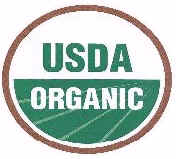

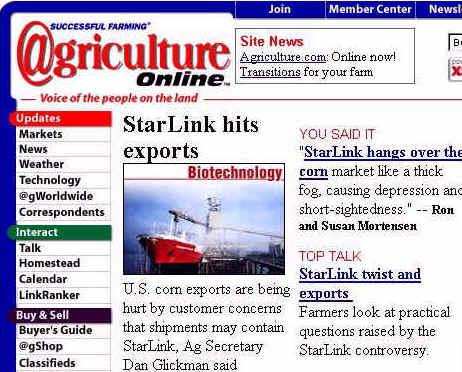

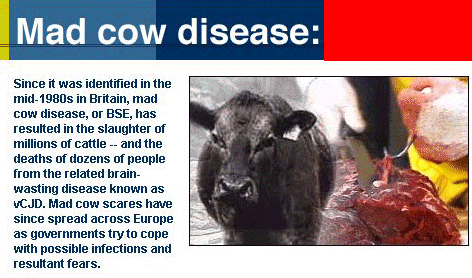
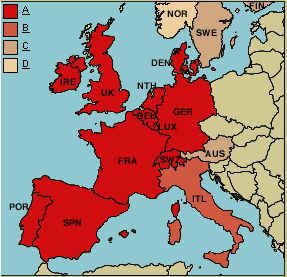 @
@